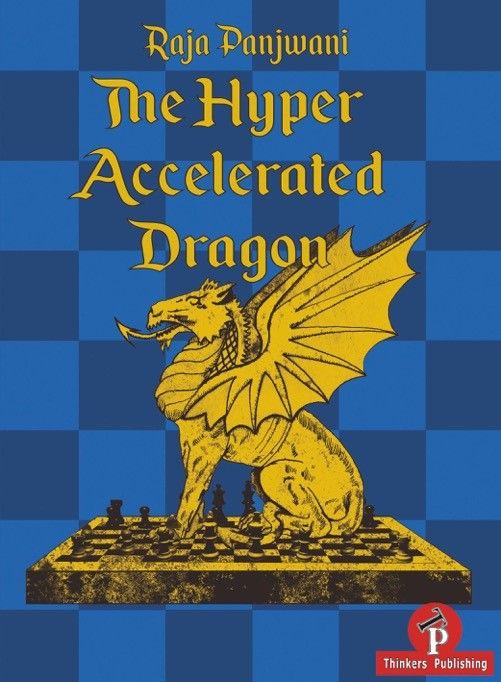
Book Review: The Hyper Accelerated Dragon by Raja Panjwani
In the weeks to come, I will be covering several recent books on the opening in this column. While there are many experienced trainers out there who demand that us amateurs stop looking at openings and focus on the real chess, the fact of the matter is that opening books continue to sell far better than any other genre in the chess world. Well, I will not go into a debate on why this is so but as an opening junkie myself, I am starting to adjust my approach to be a little more balanced. These days, I am even starting to go through some classics!
But I digress. I have received complaints that my reviews are getting a bit too long so I should really get to the point......
The Hyper Accelerated Dragon by Raja Panjwani, Thinkers Publishing 2017

The Accelerated Dragon and Hyper-Accelerated Dragon (where one starts with 1.e4 c5 2.Nf3 g6!?) have always been much maligned in the Sicilian world. Indeed, as the author pointed out in the introduction, the HAD has a much inferior reputation as compared to virtually every other mainline in the Sicilian. Apart from Azeri Rauf Mamedov and Venezuelan GM Eduardo Iturrizaga, I couldn't really recall a single top player that plays this opening religiously.

Azerbaijian's Rauf Mamedov, who, on the back of recent successes has reached a career high live rating of 2709. Sincere congratulations! | Photo: Peter Doggers/Chess.com
Much of its bad repute is due to White's central set-up with e4 and c4, the so-called Maroczy Bind which many believe to lead, if not to a slight advantage for White, to at least a passive position for Black where the second player has to wait patiently for his turn to find counter-play. Panjwani has this to say:
"I suspect that computers have deterred many potential devotees away from the Accelerated Dragon. Computer evaluations in the main lines tend to fluctuate between +0.25 and +0.5, which plausibly leads to the rationale that playing the Accelerated Dragon instead of the Berlin or Marshall - where evaluations are closer to +0.15 is like playing with a small handicap straight out of the opening. Things, however, are not so simple. Computers evaluate each position by objective features, without regard for subjective factors which are very often more important in tournament chess. Machines systematically ignore the value of, for example, being able to follow one of a small number of thematic plans, irrespective of what the opponent does, saving on clock time as well as risk of mishandling the position. This sort of human element is unaccounted for by the engine, resulting in an inflated estimation of White's chances....."
This is a rather chunky bit to quote but I think it is important to share this as it immediately draws confidence that this is not someone who will be regurgitating long lines of analysis from Stockfish or Komodo. As a lifelong HAD player, Panjwani draws on his experience and understanding of the line and combined with his understanding of chess engines and their limitations, he shares his personal repertoire for Black players to play for a win against 1.e4. Yes, you read that right - and when I read this bit in the intro, I am every bit as sceptical as you are as I couldn't imagine how Black could objectively play for the win under the torturous vines of the Maroczy Bind.....

IM Raja Panjwani in one of his rare games without the Dragon bishop. Many thanks to him for providing the pic!
The author recommends 2 systems against White's main attempts in obtaining an opening edge, namely 7.Bc4 (the Yugoslav-style approach) and the afore-mentioned Maroczy Bind. I will delve straight into the lines that I perceive as the most critical and see how Panjwani's bold claims stand up to scrutiny.
After the starting moves 1.e4 c5 2.Nf3 g6 3.d4 cd4 4.Nd4 Bg7 5.Nc3 Nc6 6.Be3 Nf6 7.Bc4, Panjwani recommends 7..Qa5 in chapter 2. The critical position soon arises after 8.0-0 0-0 9.Bb3 d6 10.h3 Bd7 leading to the following position:
